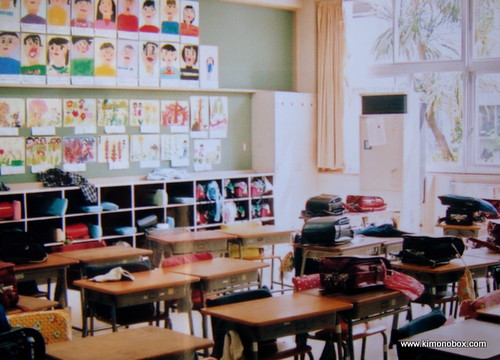ベルの音がしたら自転車が突っ込んでくるから気をつけないといけません。
電車と徒歩で学校へ。
霜が降りています。
凍えながら今日の参観校、ダルトンスクールへ到着!
ここでは、まず中学1年生、12歳の生徒から彼らの行っているダルトンアワーのレクチャーを受けました。
中学1年生はダルトンアワーを初めて数ヶ月、ようやく慣れ始めたところだそうです。
そんな中、普段の学びについて改めて考え、外国人に分かりやすく英語で伝えるというのは、生徒達にとって大きな挑戦だったと思います。
そして、私達参観者にとってそれは、大きすぎる挑戦でした。
生徒とマンツーマン、英語でダルトン教育のレクチャーを受ける!
とっても貴重な機会を頂きました。
 そして、心の底からもっと英語を勉強しなきゃと感じました。
そして、心の底からもっと英語を勉強しなきゃと感じました。次に、最終学年高校3年の生徒から、彼らの卒業研究についてPBL(Project-Based Learning)の視点から説明を受けました。
彼らはまだ高校生だけど、やっていることは既に研究者の域でした。
この学校でのPBLは、どういうものかを高校生に質問すると、研究テーマを定め、その問題を解決するために、いくつもの教科を用いて進めるものという答えが返ってきました。
その後、日本PBL研究所の先生からPBLの定義の話がされました。
PBLでは、自分の生活との関連からテーマを見つけ、問題解決のために何をしないといけないかリストアップして、計画した上で、自身でリフレクションを行うことが重要であるという話がされました。
この話を受け、学校の実際としては、カリキュラムとしてリフレクションが位置づいている訳ではないが、先生によっては丁寧なリフレクションのサポートがされるとのことでした。
私たちに自己の研究を説明説明してくれた学生は学校内でもトップクラスの成績であることもあって、とても自信に満ち溢れていて、ダルトン教育を受けていることにも誇りを持っている様子が印象的でした。
そしてその姿から、子どもが伸びていくには自分自身の可能性を信じられるかこそが重要だと感じました。
 この学校では教師は子どものプロジェクトを応援するアドバイザーという立ち位置だそうです。
この学校では教師は子どものプロジェクトを応援するアドバイザーという立ち位置だそうです。教師がプロジェクトを行う意義をはっきりさせ、子どもたちが自信をもって自身の興味に向かっていてるようにサポートすることが重要なのだと思いました。
今回の視察だけでは、その全てを理解しきれなかったように思います。
でも、だからこそ、よりダルトン教育への興味がわきました。
今日感じた「もっと知りたい、学びたい」の気持ちを忘れないようにしたいです。
さて、視察後は遅いお昼として運河の河川敷の見渡せるパンケーキやさんへ行きました。とってもおしゃれで雰囲気のあるお店!
ベーコン、ハム、パイナップルとチーズのパンケーキ。
それに砂糖やメイプルシロップをかけて食べます。
 なんだか、お好み焼きとかチヂミみたい。
なんだか、お好み焼きとかチヂミみたい。 そして、世界遺産!オランダと言ったら風車!たくさん写真撮りました。
時間がおしてしまったので、美術館でレンブラントの「夜警」ではなくて、アムステルダムの夜景を見ることに!
いざ、極寒クルージングへ。
伝統的なものから近代的なものまで不思議な建築がたくさんあります。
どの建物も生活感がなくて、おしゃれな装飾がしてあって、見ていて飽きません。
外から見られることを強く意識してあるように思いました。
また、運河に浮かぶ船の中にも人が住んでいる?レストランがある?ようでとっても不思議でした。
見応え抜群の運河クルーズ。
極寒にも関わらず、もう一周したいという声もありました!
おしゃれで外から丸見えの建物みていたら、アムステルダムの人達がどんな自意識を持っているのかが気になりました。
オランダは今日でおしまい。
また来たいな〜〜〜










